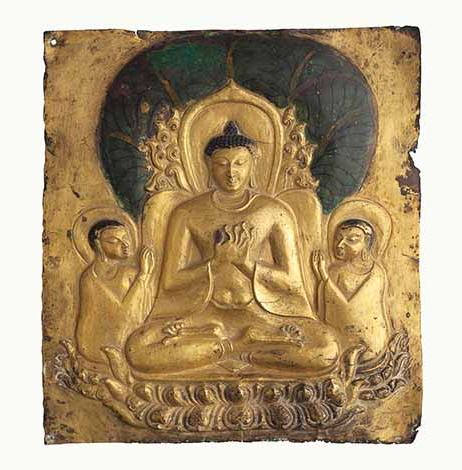COMPRISING approximately 70 works from the 5th through the early 20th century, this is the first exhibition of Buddhist Art of Myanar in the US devoted to the arts of ancient Burma. The works include objects of stone, bronze, and lacquered wood as well as textiles, paintings, and ritual implements related to the Buddhist art of Myanmar.
The majority of these are on loan from Myanmar (Burma) and have never been seen in the West and include loans from the National Museums in Yangon and Nay Pyi Taw, the Bagan Archaeological Museum,Sri Ksetra Archaeological Museum, and the Kaba Aye Buddhist Art Museum, as well as works from public and private collections in the US. The importance of this particular exhibition is that it is the very first comprehensive exposure in the US of an artistic tradition that is well known, but rarely discussed as a whole.
Fifteen Centuries of Artistic Tradition in the Buddhist Art of Myanmar
The exhibition of Buddhist Art of Myanmar covers over 15 centuries of that country’s artistic tradition. Works of devotional art created in stone, metal and lacquered wood for temples, monasteries, and for personal devotion are carefully presented within their historical and ritual contexts. Not only does the exhibition carefully document the long, unbroken presence of Theravada Buddhism, but also it reveals the ancient Burmese unique combination of styles and techniques in which deities are represented.
Buddhism Reached Burma from Northeast India
Like Tibet and the ancient region of Gandhara, Buddhism reached Myanmar from northeast India. It arrived in the 3rd century BC as Theravada Buddhism – the predominant religion of Southeast Asia. The ties between the Buddhist arts of classical Burma and those of Bihar were so close that small 11th/12th-century ivory shrines from these two cultures are extremely hardto distinguish one fromthe other.
The exhibition of Buddhist Art of Myanmar is organised into three sections: Images of the Buddha, Lives of the Buddha, and Devotion and Ritual, which showcase the multiplicity of styles throughout the country, in part a reflection of the localisation of religious practice. The objects bring into relief such issues as state support of Buddhism, the effects of trade and international relations, and the role of local myths and ethnicity, all of which have inextricably linked Buddhism and classical Burma for more than 2,000 years.
The Pyu Period in the Buddhist Art of Myanmar
These main eras include the Pyu period, an era of significant overland trade with the Indian subcontinent and China; the Bagan period (849-1287), a time of strong Indian Pala-period Buddhist influence that was notable for stunning stone and bronze sculptures; the Ava period (1287-1782), from which relatively little Buddhist material survives; and the Konbaung Dynasty (1752-1885), when Myanmar’s rulers extended their domain into parts of Laos and Thailand (Siam) and a period from which resplendent gilt and inlaid lacquer Buddhist sculpture survives.
The Bagan Period
The apex of classical Burmese art is considered to be the Bagan period (849-1287),a time of strong Indian Pala-period Buddhist influence that was notable for stunning stone and bronze sculptures. After this Indian-influenced period, there is more stylistic influence from Thailand and begins an ongoing period of foreign influence. An good example of Bagan Period style in the exhibition is a large 12th-century sandstone panel depicting the death of the Buddha and which was until very recently in its original temple niche at the Kubyauknge Temple.
Besides a Pala style stele of Siddhartha cutting his hair, there is a sterling example in the exhibition of this glorious Pagan Period. It is a gilt metal (probably copper or copper alloy) plaque of the Buddha seated dhyanasana with his hands positioned in dharmachakra mudra and flanked by two adoring arhat. It is fully Pala in style, especially his elongated face and typically Northeast Indian expression of serenity.
A fully illustrated catalogue that explores the Buddhist Art of Myanmar, co-published by Asia Society and Yale University Press, accompanies the exhibition and features new photography of the loans from Myanmar. The book is the first publication to critically examine works of art from collections in Myanmar with contributions by art historians, historians, and religious studies specialists. It includes scholarly essays and an extensive bibliography. It also has a glossary of Myanmar, Pali, and Sanskrit terms; geographical, historical, and religious names and places; and mythical figures.
BY MARTIN BARNES LORBER
Until 10 May at 25 Park Avenue (at 70th Street), NYC, NY 10021, www.asiasoc.org. Asia Society has organised a series of public programmes to coincide with the exhibition, including talks on the history of Buddhism in Myanmar, performances and other cultural programming. More information on the society’s website.




